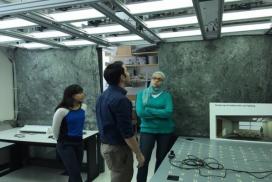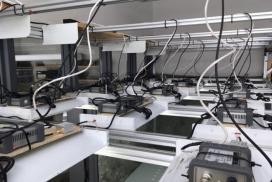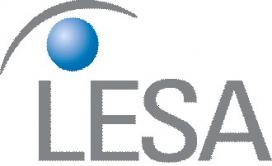Researchers Deploy Testbed of 15 Light-Based Cells for Wireless Access
Researchers at the Center for Lighting Enabled Systems & Applications (LESA), an NSF-funded Engineering Research Center (ERC) headquartered at Rensselaer Polytechnic Institute (RPI), have demonstrated a highly-dense wireless network comprised of 15 small lighting cells. This new testbed at Boston University ensures very limited interference with neighboring access points, unlike WiFi.
The testbed relies on light’s directional characteristics to narrow the coverage area of access points. These light-enabled cells can be used to increase availability of wireless access and bandwidth for smart devices while producing far less interference than RF technologies, which are omnidirectional and difficult to control in small-area coverage.
The testbed utilizes the flexibility of software-defined radio (SDR) concepts to provide an adaptive network of Visual Light Communication (VLC) cells. The signal processing and data modulation are implemented in software utilizing the GNURadio toolkit, and a set of four X310 universal software radio peripherals (USRPs) to generate and drive 15 unique signals into the array of luminaires.
These signals are passed through a voltage-controlled current driver and bias tee to generate the LED drive currents that modulate each luminaire. The cells capture the modulated light at the receiver end with COTS photo-sensors that use simple optics components (lens, filters, cones), as well as with multi-channel multiple input, multiple output (MIMO) devices developed by LESA at RPI.
To date, the ERC has successfully used the testbed for analyzing interference characteristics in dense VLC networks, coverage vs. availability of VLC networks with different receiver designs and transmitter deployments, and indoor positioning using Visible Light Positioning (VLP) techniques.




